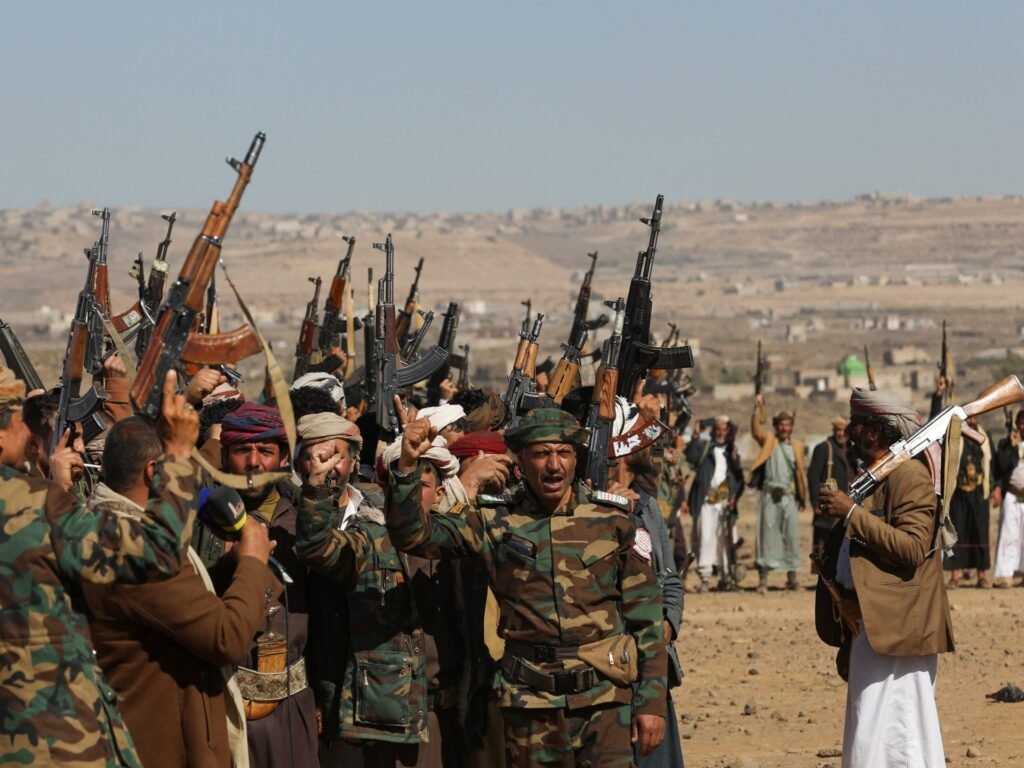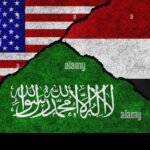
In this article, let’s look at some of the national players involved in Yemen conflict. The major players include the Houthis, the political parties in North and South Yemen, STC, local militias and so on.
The Houthis or the Ansar Allah group
The Houthis are officially known as the Ansar Allah group which is a Zaydi revivalist and Islamist political and military organization that emerged from Yemen in the 1990s. It is ethnically made up mostly of Zaydis, their leadership mainly from the al-Houthi family. Under the leadership of Zaydi religious leader, Hussein al-Houthi, the Houthis emerged as an opposition movement to the then Yemen president Ali Abdullah Saleh, whom they accused of corruption.
In 2003, the Houthis adopted their official slogan against the United States, Israel, and the Jews. Al-Houthi resisted Saleh’s order for his arrest and was afterwards killed by the Yemeni military in Saada in 2004, sparking the Houthi insurgency. Since then, the movement has been mostly led by his brother Abdul-Malik al-Houthi.
The group was part of the Yemeni Revolution of 2011, participating in street protests and coordinating with other Yemeni opposition groups. They joined Yemen’s National Dialogue Conference but later rejected the 2011 reconciliation deal. Yemen’s civil war began in 2014 when Houthis took over Yemen’s capital and largest city, Sanaa, demanding lower fuel prices and a new government.
Following failed negotiations, in January 2015, they seized the presidential palace, forcing President Abd Rabbu Mansour Hadi’s government to resign and flee the country. In March 2015, Saudi Arabia and its Gulf allies launched air strikes against the Houthi insurgents, “ably” supported by the US and its western allies. In July 2016, the Houthis and the government of former President Saleh, announced the formation of a political council to govern Sana’a and much of northern Yemen. But this did not last long and in December 2017, Saleh broke off with the Houthis exhorting his followers to fight them. Saleh was killed in the fight and his forces defeated within a few days.
In this regional conflict, millions of people have been displaced, facing famine, thousands killed or detained illegally, abused, tortured or maimed.
By the end of 2019, the conflict led to the splintering of the economy into two broad economic zones under territories controlled by the Houthis in the North and the Saudi/UAE-backed government in the South.
Then the Israeli war on Gaza started in November 2023, turning the Houthis against Israel as well. The conflict spread faster and wider when they started targeting commercial vessels in the Red Sea drawing the economic forces directly into the conflict.
So Houthis are more than as a proxy for Iran or an Islamist group. They have a strong political background and are less elitist than the previous and present governments propped up by regional and International powers. And they are an integral part of the current conflict in Yemen and should be a major participant in peace talks and not dismissed as another “Islamic terrorist group”.
The Southern Transitional Council (STC )
The STC was established in 2017 with the support of UAE, formed by a faction of the Southern Movement that predates the civil war. It now controls areas in south-west Yemen around and including Aden. It stands for and works toward the separation of southern Yemen from the rest of the nation, as it was until 1990. In January 2018, separatists loyal to the STC seized control of the Yemeni government headquarters in Aden in a coup d’état against the Hadi government. On 27 August 2019, tensions escalated in southern Yemen after the UAE-backed Security Belt Forces (SBF) lost territories to troops loyal to the Saudi-backed government of President Hadi. Thereafter, a Saudi-brokered deal incorporated the STC into an internationally-recognized government (but localised in South) thus giving them political legitimacy. In April 2022, STC joined the Presidential Leadership Council, after the then-Yemeni President Abdrabbuh Mansur Hadi resigned and transferred presidential powers to the newly formed body.
This appears to be a legitimate but separatist political group, likely elitist, who stand to gain with South Yemen with its oil resources seceding from Yemen. They claim to anti-theocratic but like the Houthis, they are also accused of curtailing the rights of women for eg., women’s rights like freedom to work, to travel without a male companion, etc., are being taken away. And they have already proved their incompetence in managing the economy, by taking a string of banking decisions that tanked their currency and locked public funds in banks.
General People’s Congress (GPC) –
Established in 1982 in Sana’a, they have been in power since 1993. The party stands for Central rule, Arab nationalism, Yemeni nationalism, Pan-Arabism and is a political party with members with a broad spectrum of beliefs. But there does not appear to be much democratization in the party as their first President, Mr Ali Abdullah Saleh remained in power for 18 years till 2011. It’s probably US support that gave him that unchallenged power. Saleh thereafter tried to regain power by siding with the Houthis, effectively splitting GPC into pro-Houthi and pro-Hadi factions. After his assassination in 2017, the party fractured further with one set of Saleh followers backing the Houthis and another creating a new party under Saleh’s son, Ahmed Saleh supporting Hadi. This party is effective in the North, so we have to assume the Houthis are working with GPC’s pro-Houthi faction now.
Yemeni Congregation for Reform( al-Islah) –
A Yemeni Sunni Islamist movement established in 1990 defining themselves as a political organization seeking to reform life on the basis of Islamic principles and teachings. Their foreign-policy agenda includes strengthening the country’s relations with KSA and the countries of the GCC, are heavily backed by the Saudis. But they are more a coalition of tribal and religious elements than a political party and pitted against the Shiite-leaning Houthis. For more on this, please read my article Global conflicts under the radar – Part XXXII –Yemen – Players, available with half-yearly subscription.


